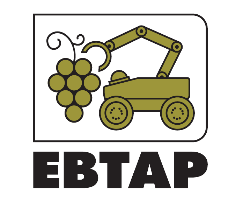
Expected Results
In the year 2013/14, Greece produced about 2.20% of that year’s wine in the European Union. Characteristic of Greek grapes is their high quality, which is a prerequisite for the production of competitive wine products. In recent years, Greek wines have been increasing their share of the global market.
This project is expected to develop an innovative tool (see robot ART) for mechanized automation of viticultural work in support of increasing the share of Greek wines in competitive markets around the world in three ways: (a) increasing quantity, (b) improving the quality of the grapes produced which are the “raw material” for the production of wine products, and (c) reducing production costs. Expected advantages of ART include: (a) Automation of viticulture. (b) Ability to implement, precisely, a parameterized strategy across the vineyard, e.g. during leafing as well as during the Green / Homogeneous Harvest. For example, grapes can be detected with the desired degree of ripeness as well as their mechanized harvesting from anywhere in the vineyard.
The proposed ART robot is of high added value due to (a) the completion (see assembly) of a wheeled robot, electronic instruments, instruments for “on-site” chemical analysis, at least one robotic arm and final action elements, and (b) intelligent support software that drives ART and gives it the ability to mine at least as efficiently as a skilled miner. It should be noted that none of the existing machines in viticulture, whether P-shaped, Wall-Ye or Vinbot, have all the technical characteristics and capabilities of ART. Specifically, on the one hand, “P” shaped machines perform a harvest in bulk, while ART performs a personalized harvest. On the other hand, Wall-Ye is not yet a vintage, nor are chemical analyzes, while Vinbot is only equipped with electronic sensors and has no end-to-end performance. In the opinion of winemakers and winemakers / agronomists of this proposal, there is no device with the characteristics of ART.
An additional expected result is the prospect of mass production of innovative ART robots from a future industrial production line. In other words, a successful robot ART, in addition to its useful value in vineyards in Greece, can be the same (ART) product of Greek industrial production with export interest. This will compensate for any job losses in Greek viticulture (due to the automation of harvesting work with the ART robot) by creating more and better paid jobs due to the expected demand of ART not only in Greece but also abroad. In fact, the new jobs that are expected to be created will not only be for technologists / engineers, but also for a variety of other specialties such as oenologists, agronomists, chemists and even skilled miners because the study / development / maintenance and continuous improvement of ART requires synergy of many different specialties.
The know-how that will be developed in this project is expected to be expanded in the future in a (less) “structured environment”, e.g. in vineyards planted in sloping and / or in non-smooth soils, (b) measurements of additional sizes (eg grape aroma), (c) other viticultural work, e.g. pruning, spraying, etc., (d) in addition to viticulture, e.g. in olive production. In addition, collaborative teams from ART could be used to implement a variety of agro-livestock work.
